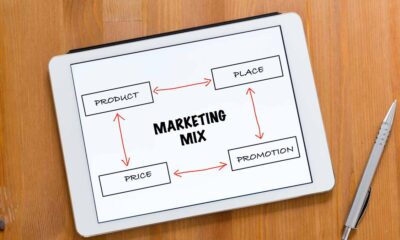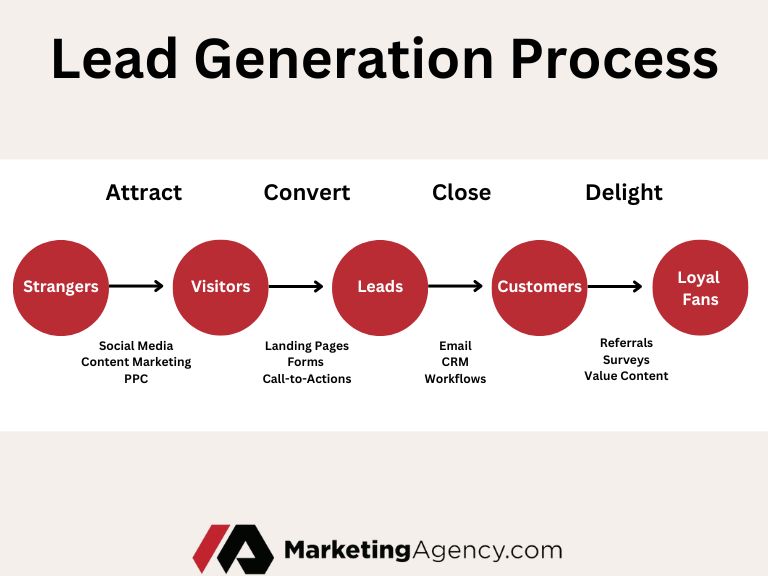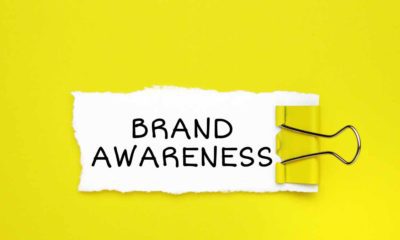Featured
Lead Generation: Your Complete Beginner’s Guide
Have you ever paused and pondered about the mechanics behind the continual influx of clients for some businesses? Those advertisements that seem tailored just for you or those notifications on websites urging you to join their mailing list might’ve caught your attention. These are not mere coincidences or pushy business tactics; they are strategic moves in the intricate game of lead generation.
The digital world is overflowing with potential customers, yet not all of them are immediately visible or accessible to businesses. This is where the art of lead generation comes into play. By employing various tools, strategies, and platforms, businesses aim to transform the vast ocean of online users into a manageable stream of potential clients. So, let’s embark on a journey to unravel the mystery behind this essential digital marketing strategy.
What is a Lead?
At its core, a lead represents a person or an entity that exhibits a keen interest in what you’re offering, be it a product, service, or a solution. In the vast realm of business and marketing, envision leads as seeds of opportunities; they possess the potential to sprout into loyal customers, but they’re not quite there yet. Just as seeds come in various types with differing growth requirements, not every lead is identical.
Their level of interest, readiness to purchase, and how they interact with your business vary significantly. So, the pressing question emerges: How do we categorize and differentiate these diverse leads to better cater to their unique needs and expectations?
Marketing Qualified Lead (MQL)
An MQL is an individual who’s been warmed up via marketing endeavors, often having interacted with tailored content such as eBooks, webinars, or informative blog posts. While they’ve signaled a noteworthy interest in what’s on offer, they haven’t yet reached the point of making a purchasing decision. Think of them as explorers gathering information, but not yet prepared to set up camp.
Sales Qualified Lead (SQL)
Transitioning from an MQL status, an SQL is a lead that stands on the brink of becoming a customer. After detailed assessment and nurturing, these leads show distinct purchasing intent, moving beyond mere interest. It’s as if they’ve shortlisted you and are now seriously contemplating pulling out their wallet.
Product Qualified Lead (PQL)
PQLs represent users who’ve already sampled what you have, particularly relevant for businesses with a freemium model or trial offers. Based on their experience with the initial product, they demonstrate a propensity to invest further, be it an upgrade or an additional purchase. Imagine them as diners who’ve tasted the appetizer and are now eyeing the main course.
Service Qualified Lead
Service Qualified Leads are those proactive individuals who initiate direct interaction, often expressing a clear interest or seeking further details about a particular service. They’re not just passive observers; they’re reaching out, metaphorically tapping you on the shoulder and saying, “This looks interesting; tell me more about it.”
[Read More] 10 Ways To Get Clients For Your Freelance Digital Marketing Business In 2023
What is Lead Generation?
Lead generation is like fishing for new customers. Instead of just looking for names or phone numbers, it’s about getting strangers interested in your business. Think of a party where you meet lots of new people. Your job? Chat with them, tell them about what you sell, and hope they’d want to buy from you later. It’s about making friends for your business, especially with those who might not know they want what you’re selling yet.
Why is Lead Generation Important?
Imagine being at a party and trying to strike up a conversation with someone you’ve never met. It’s always easier when they’ve already shown an interest in the topic you bring up, right? That’s the essence of lead generation. When individuals organically express curiosity about your offerings, the journey from mere acquaintances to loyal customers becomes smoother and feels more authentic.
In the grand tapestry of inbound marketing, lead generation isn’t just a solitary stitch; it’s a pivotal phase. After successfully grabbing the attention of your audience, it’s the next big step—turning those intrigued visitors into actionable leads that your sales team can pursue. Picture it as a relay race: once the baton of ‘attention’ is passed, it’s the ‘lead generation’ runner’s job to maintain momentum and hand it off to the sales team seamlessly.
As depicted in many marketing models, lead generation serves as a crucial nexus point, bridging the gap between mere interest and an eventual purchase, guiding prospects through their journey towards becoming satisfied customers.
Lead Generation Strategies
Facebook Lead Generation
Facebook, with its expansive user base, is more than just a social networking platform; it’s a lead generation powerhouse waiting to be tapped. Crafting targeted ads and sharing compelling content are pivotal. Not only does this approach ensure reach, but it also ensures that the reach is purposeful and resonates with a potential customer.
Actionable Steps: Start by researching your audience demographic on Facebook. Create and test various ad creatives to see what resonates best with your audience. Additionally, schedule regular engaging posts, run polls, and conduct Q&A sessions to actively involve and nurture your potential leads.
Google Ads Lead Generation
Harnessing the potential of Google Ads can provide unprecedented growth for your business. By targeting specific keywords aligned with your offerings, you can capture the attention of users actively searching for services or products like yours. This targeted approach ensures higher conversion rates, ensuring a promising ROI when executed aptly.
Actionable Steps: Begin by conducting thorough keyword research to understand what potential customers are searching for. Create ad campaigns with compelling copy and a strong call to action. Regularly monitor and optimize for performance to ensure you’re getting the best bang for your buck.
LinkedIn Lead Generation
LinkedIn, primarily recognized as a professional networking platform, is a treasure trove for B2B lead generation. With tools like sponsored content, InMail, and dynamic ads, reaching your desired audience is seamless. Given the professional nature of the platform, leads generated here often have a higher conversion potential.
Actionable Steps: Develop a comprehensive LinkedIn company profile. Utilize sponsored content to promote insightful articles or company news. Send personalized InMails to potential leads, and use dynamic ads for retargeting purposes, ensuring consistent engagement.
B2B Lead Generation
Generating leads in the B2B sphere requires a nuanced approach. It’s not just about reaching businesses but resonating with their specific needs and pain points. Leveraging tools like webinars, ebooks, and crafting industry-specific content can position your business as a thought leader, making it attractive to potential leads.
Actionable Steps: Identify the industries you aim to target. Host webinars addressing specific pain points in those industries. Create and distribute ebooks or whitepapers offering solutions. Regularly engage with industry forums or groups, showcasing your expertise.
Twitter Lead Generation
Twitter is not just about trending hashtags; it’s a dynamic platform to drive lead generation. By leveraging Twitter ads, collaborating with influencers, or even initiating contests, you can spark conversations and interest in your brand. This not only creates buzz but can also lead to a significant influx of potential leads.
Actionable Steps: Pinpoint influencers in your niche and initiate collaborations. Roll out Twitter-specific campaigns or contests, encouraging retweets and engagement. Use Twitter ads to promote your most valuable content or offers, ensuring wider reach and engagement.
[Read More] What is CPCV in Digital Marketing?
6 Top Lead Generation Tips For Your Business
Understand Your Target Audience
Before you start any lead generation campaign, it’s crucial to have a deep understanding of your target audience. This includes their needs, challenges, habits, preferences, and demographics. Conduct market research, surveys, and feedback sessions to gather insights. By understanding your audience, you can craft tailored messages and offers that resonate more effectively, increasing the chances of conversion.
Offer Value First
Instead of going for the hard sell right away, offer potential leads something valuable in exchange for their contact information. This could be a free e-book, a webinar, a trial version of your product, or even a helpful newsletter. By providing value upfront, you not only position your business as an industry authority but also build trust, making the subsequent selling process smoother.
Optimize Landing Pages
Your landing page can make or break your lead generation efforts. Ensure that it’s clear, concise, and free of distractions. Highlight the benefits of your offer, use persuasive call-to-action (CTA) buttons, and make sure the page loads quickly. Additionally, the landing page should be mobile-responsive since a significant portion of users might access it via smartphones or tablets.
Utilize Multi-Channel Marketing
Don’t put all your eggs in one basket. Diversify your lead generation strategies across multiple channels. Whether it’s email marketing, pay-per-click advertising, social media, SEO, or content marketing, utilizing multiple avenues increases the chances of reaching a broader and more varied audience. Monitor the performance of each channel to understand which ones are most effective for your business and adjust your strategies accordingly.
Nurture Your Leads
Generating a lead is just the first step. Once you have their contact information, it’s essential to nurture these leads through regular engagement. This can be through targeted email campaigns, retargeting ads, or informative content tailored to their interests and stage in the buying journey. Remember, not every lead will be ready to purchase immediately. Nurturing helps keep your brand top-of-mind, so when they are ready, they think of you first.
Use Data to Drive Decision Making
Harness the power of data in the digital age. Analyze interactions and engagements to refine your lead-generation strategies. By studying patterns from your campaigns and utilizing tools like Google Analytics and CRM systems, you can base decisions on concrete data. This data-driven approach not only enhances strategy efficiency but also maximizes results and ROI.
[Read More] Which Characteristics Distinguish Digital Marketing From Traditional Marketing? 5 In Focus
Bottom Line
Lead generation isn’t simply a trendy term thrown around in business circles. It’s the bedrock upon which successful businesses are built. By truly grasping the essence of what constitutes a quality lead and by employing effective strategies, companies not only drive sales but also expand their audience reach. In a world where attention is the new currency, understanding and mastering the art of lead generation can set a business apart, ensuring it doesn’t just survive but thrives.
Frequently Asked Questions (FAQ)
1. How much does lead generation cost?
The cost of lead generation can vary widely based on the industry, method of acquisition, and the quality of leads you’re targeting. Some businesses may spend only a few dollars per lead using social media, while others could spend hundreds or even thousands using more targeted methods in competitive industries. It’s essential to set a budget, understand the value of each lead to your business, and constantly measure your ROI.
2. How to generate sales leads without cold calling?
Generating leads without cold calling involves a mix of inbound and outbound marketing strategies. Inbound methods, such as content marketing, SEO optimization, and social media engagement, can attract potential leads to your website or platform. On the other hand, outbound methods like email campaigns, online advertising, and hosting webinars can actively reach out to potential leads. Networking at events and leveraging customer referrals are also effective non-cold calling strategies.
3. Is lead generation worth it?
Absolutely! While the upfront investment in lead generation can sometimes be significant, the potential ROI, in terms of sales and long-term customer relationships, makes it worthwhile for most businesses. However, the key is to focus on quality over quantity. It’s better to have fewer, more qualified leads that are likely to convert than a large number of low-quality leads that won’t result in sales.
4. What is local lead generation?
Local lead generation is the process of attracting and converting potential customers in a specific geographic area or locality. This strategy is especially vital for brick-and-mortar businesses or service providers that operate within a particular region. Techniques might include local SEO, participating in local community events, or advertising in local media to reach potential customers in the immediate area.
5. How many leads should marketing generate?
The number of leads marketing should generate depends on various factors including the company’s sales goals, conversion rates, and industry benchmarks. It’s important to determine how many leads your sales team needs to meet revenue objectives and then work backward to set a target for marketing. Regularly reviewing and adjusting based on conversion rates and sales feedback is crucial to ensure alignment between marketing and sales efforts.
Brett Heimann is a marketing & advertising professional with 10 years of experience. He's the founder of MarketingAgency.com and contributes to other publications such as; Entrepreneur, Thrive Global, and StockMarket.com. His passion for digital marketing began after graduating with a B.S.B.A in business administration and finance in 2013. After completing college, he went on to become an entrepreneur in the marketing and finance space. Brett loves the ability to deliver to his readers engaging and educational content that can be easily consumed by the reader. He enjoys writing about a wide variety of marketing topics such as; Search Engine Optimization (SEO), Paid Advertising (PPC), E-Commerce, and Lead Generation For SMBs to name a few. Brett, a South Florida native, enjoys spending time with his wife and two sons outdoors and is a big basketball and MMA fan.












